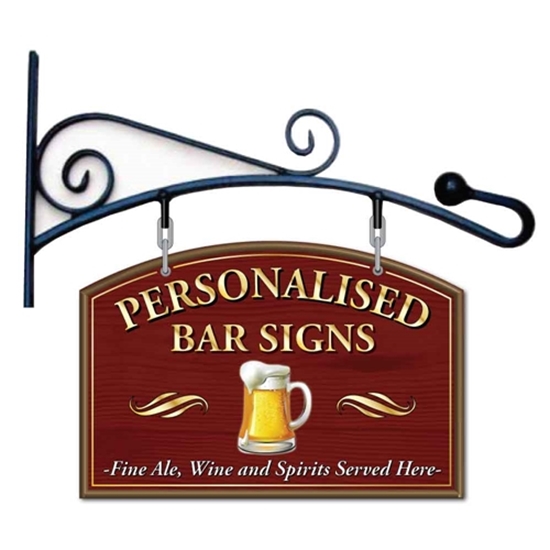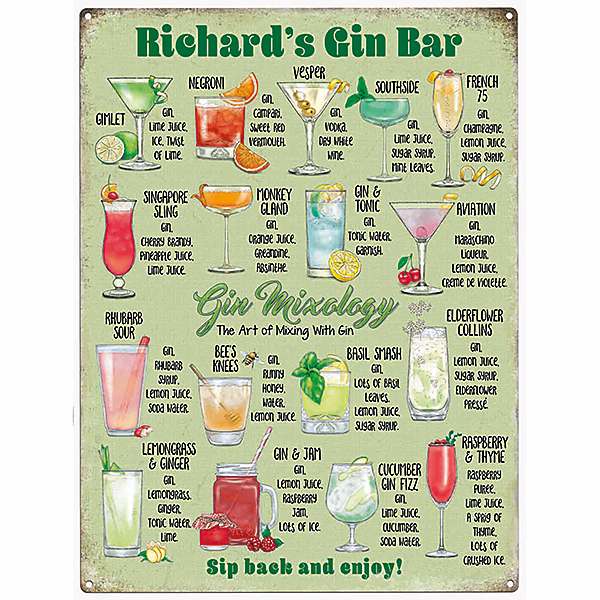Excellent Facts To Selecting Pub Signs
Excellent Facts To Selecting Pub Signs
Blog Article
What Is The Difference Between Size Between Bar Signs?
There are various sizes of bar signs depending on the purpose of their design, where they're placed and the way they appear. This is a brief overview of the impact of size differences on the function and aesthetics of bar signage: 1. Large Signs
Purpose: To attract attention and be a focal area.
Uses include: exterior signage, primary branding or walls with a focal point.
Placement: These are usually set up on walls or other large areas outside the bar, to attract customers.
Examples: huge neon signs or oversized vintage style signs, or massive wall-mounted signs.
2. Medium Signs
Uses: To provide information or decorate the space without taking over.
The uses include menu boards as well as directions and displays for promotions.
The location of the sign: Ensure that the sign is clearly visible, but not too overwhelming.
You can make use of decorative signs or even metal signs to advertise your bar.
3. Small Signs
To add subtle decorative details and/or specific aspects.
They can be used for table signs, small decorative items or labels.
The table or shelves, or in displays where close-up view is required.
For example, table number signs, small framed quotations or menus for drinks.
Size Aspects
Visibility
Large Signs: They're designed to be visible from far away, which makes them perfect for attracting pedestrians and establishing the bar's image.
Medium signs balance visibility and space efficiency to provide crucial information, but not overwhelm the decor.
Small signs are ideal for intimate details or close-ups. Improves the experience for customers by putting them in the eye of the customer.
Proportion
Large Signs: They should be proportionately big to prevent overwhelming smaller spaces. Ideal for large, open areas.
Medium Signs: Perfect for use in the interior, they can be placed wherever you want them to be.
Small signs are great for adding a little detail to small spaces, and making them fit into smaller spaces without causing clutter.
Impact
Large signs are an impact with their boldness, and they are also used as a branding element. It is used to establish the mood in the bar.
Medium Signs (Medium Size): Strikes balance between the appearance and visibility. Enhances the overall atmosphere while providing vital information.
Small Signs (Signs): Adds detail and charm to an experience.
Practicality
Large Signs: These require substantial mounting solutions, and are more expensive due to their size.
Medium Signs are easier to put up and relocate. They also provide the flexibility to make design modifications.
Small Signs are easy to change and update, they are perfect for dynamic settings like bars, where the menus or promotions are frequently changed.
Functionality
Large signs are mostly useful and attractive.
Medium Signs are functional and decorative. They provide you with vital information, while also enhancing your appearance.
Small Signs can be used to convey detailed information. They are also used as a way to add subtle decor and themes.
The ideal size of bar signage is determined by their purpose, layout, as well as the impact they have on the patrons. Be sure to keep these aspects in mind so that they are contributing to the atmosphere of the bar as well as the operational requirements of the bar. Follow the best the full report about pub bar signs for blog tips including design your own bar sign, make a bar sign, bar wall signs, personalised home bar signs, bar signs, hanging pub signs for garden, pub wall sign, pub signs made, sign for garden bar, personalised metal bar signs and more.
What Are The Main Differences Between Bar Signs With Respect To Readability?
Bar signs differ significantly in regards to readability based on several factors including font choice and the size, contrast of colors lighting, and location. These elements can impact the readability and efficiency of signs for bars. Font Choice
Specifications: the font that is used for the sign.
Readable Fonts Simple, sans-serif fonts such as Arial, Helvetica, or clean serif fonts like Times New Roman.
Stylized Fonts: decorative or script fonts can be difficult to read, particularly from a distance or dim lighting.
Impact: Clear, readable fonts enable patrons to quickly and easily comprehend the message.
2. Font Size
Specifications: the size of the text.
Large Fonts: These fonts are easier to see from afar, which makes them perfect for both main and outside signs.
Small fonts are ideal for tablestop signs, menus and other displays that are close-up.
Effect: A proper size of font is essential for reading at different distances; larger text is more readable from a distance.
3. Color Contrast
Characteristics : The difference in colour between the text (text) and the background.
High Contrast: Dark text against a light background or light text on a dark background (e.g., black and white, or white on black).
Low Contrast - Text can become difficult to read if the text and background colors are the same (e.g. black and grey).
Impact: High contrast increases reading ability and ensures that text reads clearly.
4. Lighting
Signs are characterized by their luminescence.
Well-Lit Signs: Front or back-lit signs improve visibility even in dim lighting conditions.
Signs that are poorly lit or not with adequate lighting may be difficult at nighttime to read in dimly lit areas.
Effective lighting: Proper illumination will ensure that signs are always easily read and clearly visible in dim lighting conditions.
5. Material and Finish
Specifications: The kind of material and finish used for the sign.
Matte finish: Reduces the glare. Text becomes much easier to read.
Glossy finishes: These can create glare and decrease reading ability, especially under direct sunlight.
Impact: The correct material and finish can improve readability by minimizing reflections and glare.
6. Text Layout
The sign's characteristics include text layout on the sign.
Clear Hierarchy. Organise information with headings.
Cluttered Layout: Too much text or a complicated design can make the sign difficult to understand.
Impact: A clearly organized layout allows patrons to quickly locate and understand the information.
7. Viewing Distance
Specifications: Distance from which the sign must be read.
When reading from the distance, it's important to use larger text and high contrast.
Short distance: A shorter text is fine as long as it's easy to read and understand.
Signs should be designed for the distance of view intended.
8. Placement
Particularities: the physical location of the sign in the bar.
The best position is at eye level, free of obstructions and in well-lit areas.
Poor placement. In the high places or in an the area with no lighting.
Impact: The location of signs makes them easily read by visitors.
Examples of Readable Bar Signs
Exterior Signs
Characteristics Specifications: Large text with high contrast well-lit (e.g. backlit, neon) and prominently placed.
The impact: It draws attention from customers and can be seen from afar.
Menu Boards
The main characteristics are large text with clear headings for the items and chalkboards that are backlit with good lighting.
The impact: Customers are able to decide and read their purchases. This enhances their experience.
Directional Signs
Characteristics of the arrows They have large, clear text; high contrast; located at an optimal angle to the eye.
Impact: Enhances the overall flow of customers and increases the level of satisfaction.
Promotional Signs
The characteristics include bold text to promote high contrast, well lit and located in high traffic areas.
Impact: Increases engagement with customers by effectively promoting special events and offers.
Factors Affecting Readability
The surroundings can affect how easy it is to read signs. Ambient lighting, the mood of the bar, and its overall appearance all affect this. Lighted, bright and well-lit areas improve reading ability.
Patron Movement - In busy bars, signs need to be easily understood by patrons who move around. In these situations, large text with a high contrast is helpful.
It is essential to change signage regularly, particularly when they are frequently changed or are subject to daily changes, such as specials.
By focusing on these factors the bar owners can make sure that their signage is not just visually appealing, but also readable and enhance the overall customer experience. See the most popular bar sign hanging hints for more recommendations including hanging home bar signs, pub bar signs, bar signs, personalised cocktail sign, indoor bar signs, bar wall signs, personalised outdoor bar signs, personalised signs for home bar, hanging home bar signs, bar signs and more.
What Are The Differences In Bar Signage That Are Related To Interactivity?
Interactivity can be added to bar signs in many ways to boost customer satisfaction and keep customers engaged. The interactivity of bar signs can be distinct. Static signs
Traditional Design: Signs that are static transmit information with no interactive elements.
Common types include printed posters as well as wall murals that are painted and traditional neon signs.
2. Digital Displays
Digital signage provides instant updates and animations, and multimedia content.
Touchscreens allow interactive menus, games and games as well as promotional content.
Benefits: Draw attention, provide dynamic information and boost patron engagement.
3. QR Codes
Interactive Links QR codes printed on signage may link to menus, promotions or social media profiles.
Benefits: Provide quick access to information about promotions or loyalty programs.
4. LED Screens
LED screens can be used for showing animated scrolling text or images.
Interactivity: LED screens allow patrons to engage, for instance by selecting menu items or playing a game.
Benefits: Attract attention to the content, provide an immersive experience and communicate information efficiently.
5. Projection Mapping
Immersive Experiences: Projection mapping converts surfaces to dynamic displays that offer interactive images and stories.
Interactivity - Patrons are able to engage with projected elements, such as interactive games or virtual experience.
Benefits : Increase atmosphere, make unforgettable experiences, and promote social interaction.
6. Augmented Reality
Enhanced Reality: AR overlays digital content onto the physical environment offering interactive experiences.
Interactivity: AR-enabled signs let patrons to interact with virtual objects, for example watching cocktail recipes or playing games in virtual reality.
Benefits: Unique experiences engage customers and help you distinguish your bar from other bars.
7. Motion Sensors
Motion sensors can detect motion and trigger interactive responses on signs.
Interactivity: Signs respond to patron movement by showing animations, altering content, or displaying customized messages.
Benefits Enhance engagement, design environments that are immersive, and delight patrons.
8. Social Media Integration
Online Interaction - Signs that feature hashtags or social media handles encourage users to engage online.
User-Generated Materials: Ask your customers to upload photos of signs on social networks which will increase the exposure and popularity of your bar.
Benefits: Increase community engagement, amplify brand awareness, and generate user-generated content.
9. Interactive Lighting
Dynamic Effects - LEDs and neon signs that can respond to touch or sound, and even movement.
Signs can be interactive and change the colors as well as brightness levels or patterns, depending on how people interact with them or the environment.
Benefits: Create immersive environments, enhance ambience, and draw interest of the.
10. Gamification
Signs that have Interactive Games or Challenges: These signs offer interactive games and challenges to entertain the patrons and inspire their participation.
Rewards: Offer rewards like freebies or discounts in exchange for winning games or fulfilling challenges.
Benefits include: Increasing dwell time, fostering social interaction, and enabling frequent visits.
Bar owners can create exciting experiences by incorporating interactive elements into their signage. This can entice customers, enhance brand recognition and help them differentiate themselves from the competition. Read the most popular garden bar signs advice for blog advice including hanging tavern sign, make your own bar sign, pub bar signs for sale, signs for garden bar, personalised pub signs for garden, garden bar sign personalised, pub signs for garden, bar signs for home bar, indoor bar signs, pub sign design ideas and more.